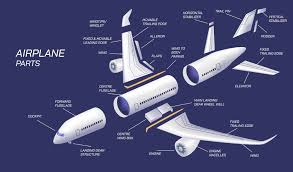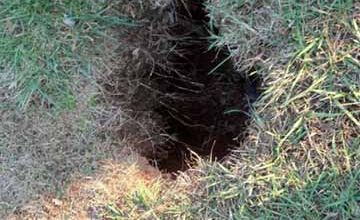How to Properly Maintain and Replace Aircraft Parts

Welcome aboard, aviation enthusiasts! Maintaining and replacing aircraft parts is the cornerstone of ensuring safe and efficient flights. Just like your car needs regular check-ups, aeroplanes require meticulous care to soar through the skies with confidence. In this blog post, we’ll take a deep dive into the world of aircraft maintenance, from understanding part terminology to practical tips for reducing costs without compromising safety. Strap in as we navigate through the essential steps for proper upkeep of these magnificent flying machines!
Importance of Properly Maintaining and Replacing Aircraft Parts
Ensuring the proper maintenance and replacement of aircraft parts is crucial for the safety and efficiency of any aircraft. By regularly inspecting and replacing worn-out or damaged parts, you can prevent potential malfunctions during flight that could jeopardize the safety of passengers and crew.
Proper maintenance also helps to extend the lifespan of your aircraft, reducing overall operating costs in the long run. It’s essential to stay proactive rather than reactive when it comes to aircraft maintenance, as identifying issues early on can prevent more significant problems down the line.
Moreover, complying with manufacturer guidelines for part replacement is key to maintaining airworthiness standards set by aviation authorities. This not only ensures regulatory compliance but also guarantees optimal performance and reliability of your aircraft. In a high-stakes industry like aviation, where safety is paramount, investing time and resources into properly maintaining and replacing aircraft parts is a non-negotiable aspect of operations.
Understanding Aircraft Part Identification and Terminology
A crucial aspect of aircraft maintenance is understanding the intricate world of aircraft part identification and terminology. Each component plays a vital role in the overall functioning of an aircraft, from engines to landing gear. Learning to differentiate between parts like actuators, avionics, or airfoils is essential for effective maintenance practices.
Aircraft part identification involves familiarizing yourself with unique codes and serial numbers assigned to each component. This helps ensure accuracy when ordering replacements or conducting repairs. Terminology related to aircraft parts can vary based on manufacturer specifications and industry standards.
By grasping the nuances of these terms, mechanics and technicians can communicate effectively during maintenance procedures. Regular training and updates on new technologies are necessary to stay abreast of evolving terminologies within the aviation industry. In essence, mastering aircraft part identification and terminology is fundamental for maintaining safety standards and ensuring optimal performance in every flight operation.
Types of Aircraft Parts and Their Functions
When it comes to aircraft parts, there is a wide variety of components that work together to ensure the smooth operation of an aircraft.
Some essential parts include the fuselage, which serves as the main body of the plane and houses passengers and cargo. The wings are crucial for lift during flight, while the tail section helps with stability and control.
Engines play a vital role in powering the aircraft forward, with propellers or turbines generating thrust. Landing gear allows for takeoff and landing operations by supporting the weight of the plane on the ground. Avionics systems encompass communication, navigation, and monitoring instruments to assist pilots in flying safely.
Hydraulic systems help operate various mechanisms such as landing gear extension/retraction and flap movement. Electrical systems power lights, instruments, and communication devices onboard. Each part has a specific function that contributes to overall flight safety and efficiency.
Common Signs of Wear and Tear in Aircraft Parts
Aircraft parts are constantly exposed to extreme conditions, leading to wear and tear over time. One common sign of wear is corrosion, which can weaken the structure of components. Look out for cracks in metal parts or composite materials as they indicate stress and fatigue. Another red flag is excessive vibration or abnormal noises during operation, signalling potential issues with moving parts like bearings or gears.
Fluid leaks such as oil or hydraulic fluid dripping from the aircraft could point to a failing seal or gasket that needs attention. Keep an eye on worn-out insulation on wiring harnesses as it may lead to electrical malfunctions. Additionally, pay close attention to any irregularities in gauges or instrument readings which could hint at underlying problems within the system.
Regular inspections and maintenance checks are crucial in identifying these signs early on before they escalate into serious safety concerns.
Steps for Properly Replacing Aircraft Parts
When it comes to replacing aircraft parts, following the correct steps is essential for the safety and efficiency of the aircraft.
- The first step is to thoroughly inspect the part that needs replacement. This includes checking for any signs of wear, damage, or corrosion.
- Next, consult the aircraft’s maintenance manual to ensure you are using the right replacement part and following proper procedures. Make sure to gather all necessary tools and equipment before starting the replacement process.
- Before removing the old part, make note of its orientation and position to ensure correct installation of the new part.
- Carefully remove any fasteners or connectors holding the old part in place without causing damage to surrounding components.
- Once the old part is removed, clean any surfaces where the new part will be installed. Install the new part according to manufacturer guidelines and torque specifications.
- Finally, perform a thorough inspection after installation to confirm everything is secure and functioning properly.
Best Practices for Maintaining and Replacing Aircraft Parts
Maintaining and replacing aircraft parts is crucial for the safety and efficiency of any aircraft. To ensure proper maintenance, it’s essential to follow best practices in the industry.
Regular inspections are key to identifying potential issues before they become major problems. By scheduling routine checks, you can catch any wear and tear early on.
Always refer to the manufacturer’s guidelines when performing maintenance or replacing parts. Following these recommendations will help maintain the integrity of your aircraft.
Proper training for maintenance staff is imperative. Ensuring that technicians are well-trained and knowledgeable about different types of aircraft parts will guarantee a high standard of workmanship.
Investing in quality tools and equipment is a must for effective maintenance practices. Having the right tools on hand will make tasks easier and more efficient.
Documentation is also vital in maintaining and replacing aircraft parts. Keeping detailed records of all maintenance activities will help track the history of each part, aiding in future decisions regarding replacement or repairs.
Tools and Equipment Needed for Aircraft Maintenance
When it comes to aircraft maintenance, having the right tools and equipment is essential to ensure the safety and efficiency of every flight. Whether it’s a small general aviation aircraft or a large commercial jet, proper maintenance requires specialized tools tailored for aviation use.
- Some basic tools needed for aircraft maintenance include wrenches, screwdrivers, pliers, and drills. However, there are also specific aviation tools like torque wrenches calibrated for aircraft components’ exact specifications.
- In addition to hand tools, sophisticated equipment such as diagnostic testers and pressure gauges are crucial for detecting issues that may not be visible to the naked eye. These advanced tools help mechanics identify problems early on before they escalate into major issues during flight.
- Investing in high-quality tools and keeping them well-maintained is key to efficient aircraft maintenance practices. Without the right equipment, tasks can become more challenging and time-consuming than necessary. Being prepared with the proper tools ensures that maintenance procedures are carried out effectively and safely.
Importance of Following Manufacturer Guidelines
When it comes to maintaining and replacing aircraft parts, one of the most crucial aspects is following the manufacturer guidelines. These guidelines are not just suggestions; they are meticulously crafted instructions based on extensive research and testing. Manufacturers have in-depth knowledge of their products, including how each part functions within the aircraft system. By adhering to their guidelines, you ensure that the parts are installed correctly and operate effectively.
Ignoring manufacturer recommendations can lead to serious consequences such as malfunctions or even accidents. Safety should always be a top priority in aviation, making it imperative to follow these guidelines diligently. Additionally, sticking to manufacturer instructions can also prolong the lifespan of aircraft components and enhance overall performance. It’s an investment in both safety and efficiency for any aircraft operator.
Tips for Reducing Costs in Aircraft Maintenance
When it comes to aircraft maintenance, keeping costs under control is crucial for ensuring the efficiency and safety of your operations. Here are some tips to help you reduce expenses without compromising on quality.
- Regularly scheduled maintenance can prevent costly repairs down the line. By staying proactive and addressing issues early, you can avoid more extensive and expensive fixes later on.
- Investing in high-quality parts and components may seem like a bigger upfront cost, but in the long run, they can save you money by lasting longer and performing better than cheaper alternatives.
- Consider partnering with reliable suppliers who offer competitive pricing without sacrificing quality. Building strong relationships with trustworthy vendors can lead to cost savings through discounts or bulk purchasing options.
- Training your maintenance team effectively can also contribute to cost-reduction efforts. Well-trained technicians are more efficient at diagnosing problems accurately, leading to faster repairs and less downtime for your aircraft.
By implementing these strategies and staying vigilant about monitoring expenses, you can effectively manage costs while maintaining the highest standards of safety and performance in aircraft maintenance.
Conclusion
Proper maintenance and replacement of aircraft parts are crucial for ensuring the safety and efficiency of an aircraft. By understanding the importance of regular inspections, identifying signs of wear and tear, following manufacturer guidelines, and using the right tools and equipment, you can effectively maintain your aircraft.
Stay proactive in your approach to aircraft maintenance, stay informed about industry updates, and consult with experts when needed. With dedication and attention to detail, you can keep your aircraft in optimal condition for smooth flights ahead. Safe travels!




